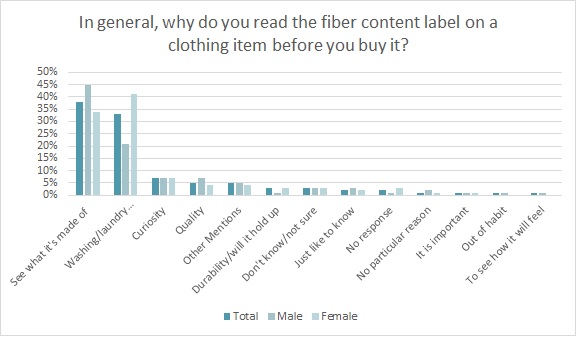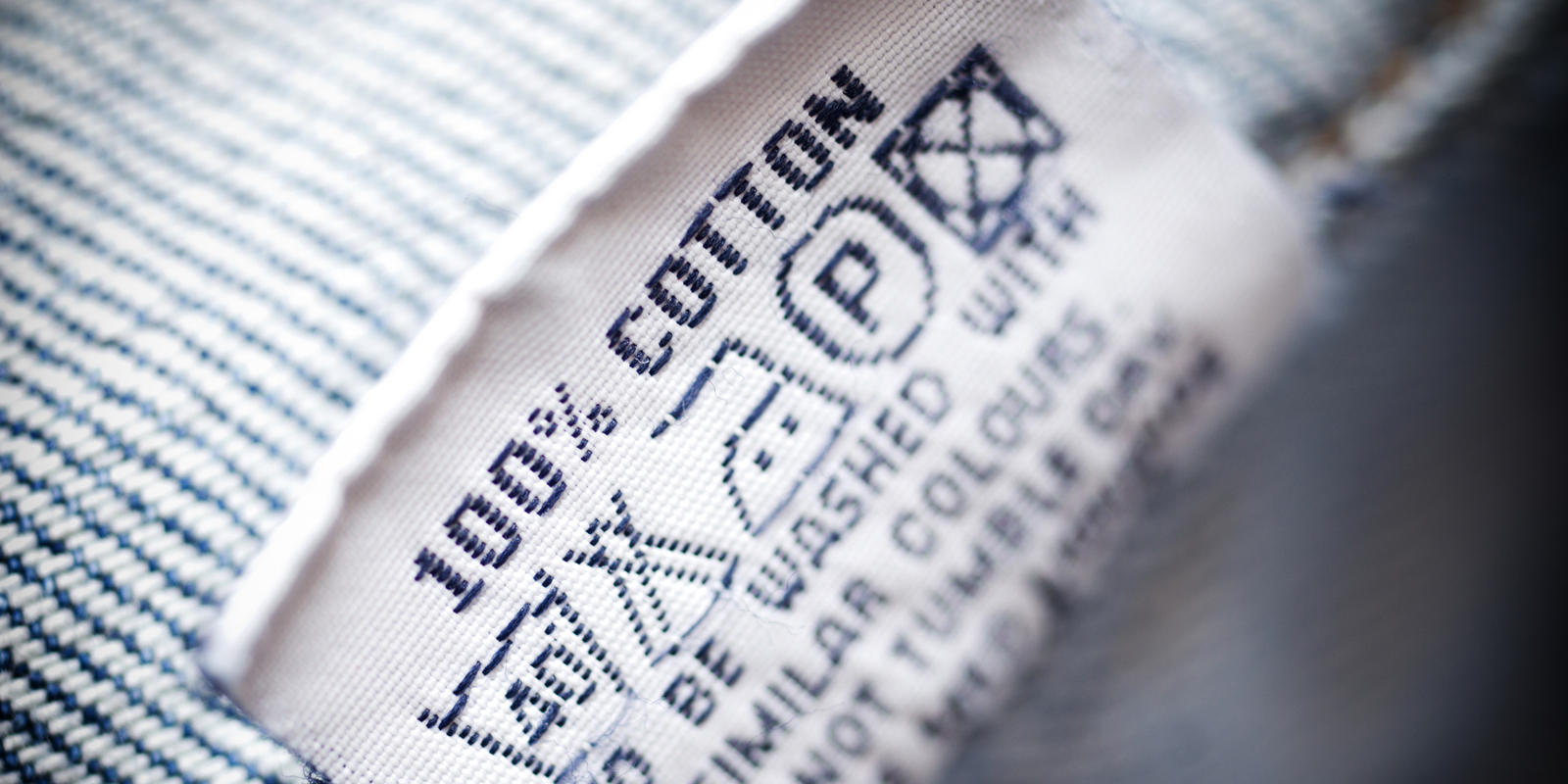Consumers are an interesting bunch. They have fiber and fashion preferences, but sometimes, for reasons ranging from fit to price to convenience, they end up buying products that end up leaving them dissatisfied. And that’s never good for a brand or retailer. Some consumers’ preferences could be addressed if they took the time to look at fiber content clothing labels before they made their purchase. But there are also steps the industry can take to keep consumers happy.[quote]
Timo Rissanen, assistant professor of fashion design and sustainability at Parsons the New School for Design in New York, says consumers alone can’t be blamed for not being happy with their purchase.
“Often, the price is a bigger driver over fiber content,” Rissanen says. “The industry has contributed, too, in the push for lower prices. I would not put all of the responsibility on consumers.”
More than four out of 10 shoppers (43 percent) check fabric content labels before buying apparel, according to the Cotton Incorporated Lifestyle Monitor™ Survey. Nearly 2 of 5 (38 percent) say they read the labels to see what the item is made of, followed by how to care for it (33 percent). When they do check for fiber content, the clear majority (83 percent) says they’re looking for cotton on the label.

Consumers are looking for cotton on the fiber labels for a number of reasons. For the majority (81 percent), cotton and cotton blends are their favorite fabric to wear, according to Monitor™ data. That’s trailed by polyester (3 percent), silk (2 percent), and rayon, spandex and wool (all 1 percent). Consumers have such an appreciation for cotton that 72 percent say, “If I could spend my life in just one fiber, it would be cotton.”
However, global fluctuations in cotton prices in past years led apparel manufacturers to shift toward using synthetics, often employing processes that helped their products have a hand feel that is closer to cotton. But these synthetics often leave consumers dissatisfied with their purchases.
Compared to apparel manufactured with manmade fibers, about 8 in 10 consumers say cotton clothing is the most sustainable (84 percent), soft (81 percent), comfortable (80 percent), authentic (80 percent), and trustworthy (79 percent), according to the Monitor™ research.
Sustainability and apparel came into focus more recently with news of tiny fiber particles — known as microplastic pollution — from apparel making its way into global waterways, even drinking water from household taps. In an investigation by Orb Media, 83 percent of tap water samples from more than a dozen nations were contaminated with plastic fibers. The U.S. had the highest contamination rate, at 94 percent.
“There is an opportunity to shift the dominance of polyester,” Rissanen states. “As the extent of microplastic pollution is beginning to dawn on us — making its way even to our drinking water — I hope to see a significant drop in polyester consumption in the near future. Household laundering of polyester garments is a major source of this pollution.”
Since consumers do have a fabric preference, Rissanen says makers would do well for themselves if they promoted that on their labels.
“Quality of cloth is something we assess with both our fingers and our eyes, and this knowledge is now mostly with older generations,” he says. “Brands that do consistently source and use high-quality fabrics, and invest in quality construction should actively tell their customers about it.”
And makers that really want to promote their fiber content might want to make it easier for consumers to read these labels. The Monitor™ research finds 40 percent of consumers say the font size used on labels is too small to see. Another 27 percent say it’s difficult to read the labels and another 20 percent say there is too much information on the labels making them too overwhelming to read.
At the recent New York Fashion Week, a number of designers focused on natural fibers and sustainability for the spring/summer 2017 collections. John Paul Ataker promoted his use of “slow fashion principles,” using materials and dyes that were as “environmentally and ecologically friendly as possible.” His spring collection includes cotton, and a color palette that emphasized unbleached fabrics, predominantly shown in white, ivory and black.
Designer Alice Potts, from London, said her approach is to use what already exists on the planet. She was one of a group of designers who presented at the Sechs Element sustainable runway show during fashion week.
“There’s a problem with getting consumers to look at labels because it often comes down to costs,” Potts said backstage before her show. “But a lot of people do care. The problem is a lot of people want to be trendy, as well as buy things that are cheap and affordable. So unless consumers stop buying more and more, and come to accept that they might only have a couple of pieces that they spent more money to purchase, it will be harder to change things.”
Apoorva Gupta, designer of the Innocence of Childhood collection, also showed at the Sechs Element event. Her spring collection includes natural fibers like cotton and silk. She says price points may be a driver for the average consumer, but designers should view this as a challenge — and create something that is inexpensive but also attractive and sustainable — and then promote it.
“In my collection, you can take one of my tops, for example, and wear it three different ways,” Gupta says. “Before becoming a fashion student, I was always attracted to things that were pretty. But then I took a sustainability class and learned that there’s more to fashion than that. I feel like today’s generation mostly looks up to celebrities and the media, so there should be a way to bring this awareness in a cool manner to consumers — like through the internet rather than handing them a textbook. And then they might get in the habit of checking labels. There should be a way to say sustainability can be fun if you do it the right way.”
